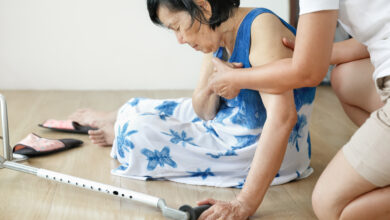No smoking zone
No smoking in rules in hospitals need to apply to the operating room as well, writes Annie May.
Operating rooms throughout NSW could soon become a safer and healthier environment, with moves being made to reduce the exposure to surgical plume.
Surgical plume (smoke) is an unwanted part of every electrosurgery and laser procedure and, along with being unpleasant, repeated exposure presents a potential danger to both perioperative staff and patients.
The plume that is released into the atmosphere can contain many harmful substances such as carbonised tissue, blood borne pathogens, viral particulates, bacteria, toxic or carcinogenic chemicals and noxious gases.
According to the International Federation of Perioperative Nurses (IFPN), it has been known to cause mucous membrane, ocular, respiratory and skin irritation.
At last year’s NSW Operating Theatre Association conference a questionnaire, completed by 130 delegates, found that few hospitals in the state use surgical plume evacuation systems.
As a result of these findings a working party was set up to raise people’s awareness of the dangers of surgical plume and to lobby the state government to mandate the use of smoke evacuators.
“Exposure to surgical plume is a serious occupational hazard,” says Penny Smalley, an international surgical plume expert who has been advising NSW OTA.
“There is a great deal of documentation, both regulatory and advisory to justify a policy for plume evacuation on all plume producing procedures.”
The Canadian Standards Association published the first standard in the world dedicated to the hazards of plume, and control measures. It includes methods for risk assessment, policy development, and the mandate for compliance. It is becoming the benchmark for plume standards worldwide, says Smalley.
In a position statement, the IFPN stresses the need for policies to be put in place to reduce the hazard. In a list of guidelines, the federation recommends that all healthcare workers who are in an environment where smoke plume may be generated wear facemasks.
However, Smalley says, masks are means as secondary protection.
“No mask protects against all airborne particles, and should not be used as first line of protection. Surgical masks are not fit tested or checked, and are often not worn properly throughout plume production in surgery,” she says.
The NSW OTA’s working party has made some ground since forming.
At a recent seminar on the issue, NSW Health’s occupational health and safety project officer, Michelle O’Heffernan, announced that a draft policy mandating the use of plume evacuation equipment will begin development shortly. The association will be involved in these discussions.
Education and training is the cornerstone for any safety program, and plume evacuation is no exception, says Smalley.
“Both medical and nursing professionals, as well as technical staff, administration, and compliance experts must become aware of the hazards of plume and the exposure risks throughout the facility,” she says.
She also says this is not just a problem in the operating room, but can be identified in any area where energy based devices are used. This includes emergency rooms, laboratories, clinics and the ICU.
“Removal of surgical plume from the surgical site is a matter of occupational safety and should never be considered an optional measure,” says Smalley.
“Risk management and infection control professionals should participate in developing and mandating procedures that will lead to 100 per cent compliance with plume evacuation policy. The goal is to make our healthcare environments safer and healthier for everyone.”
• Plume is an occupational safety and health hazard
• Surgical plume results from vaporization of cells through absorptive heating from the use of energy based devices such as lasers, electrosurgical devices, and ultrasonic devices.
• Occupational health and safety laws worldwide, mandate a workplace to be free of known hazards and the use engineering controls whenever possible.
• No mask protects against all airborne particles, and should not be used as first line of protection.
• Everyone – including clinicians, needs comprehensive education and training.
• The use of specific smoke evacuation systems is advocated.
Email: [email protected]




